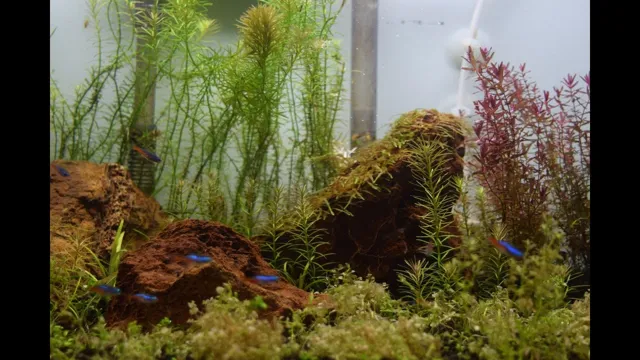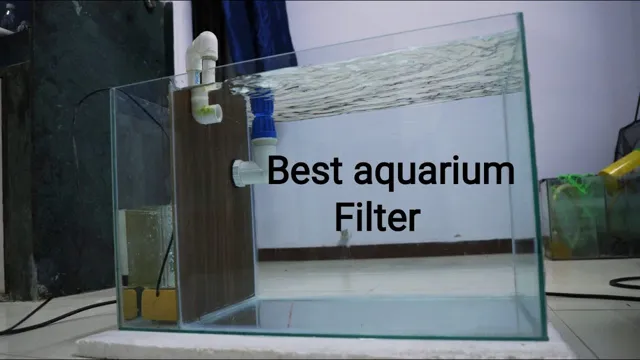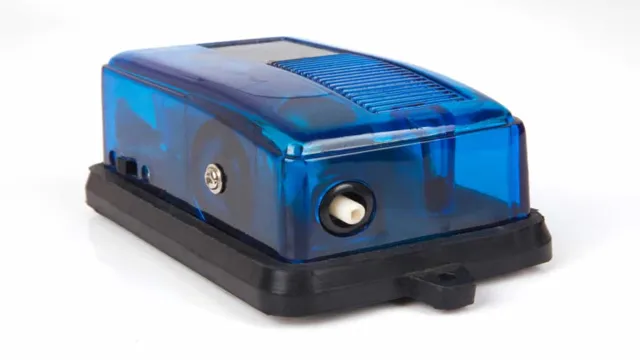How to Get Perfectly Clear Aquarium Water: 7 Simple Steps for Crystal-Clear Fish Tank
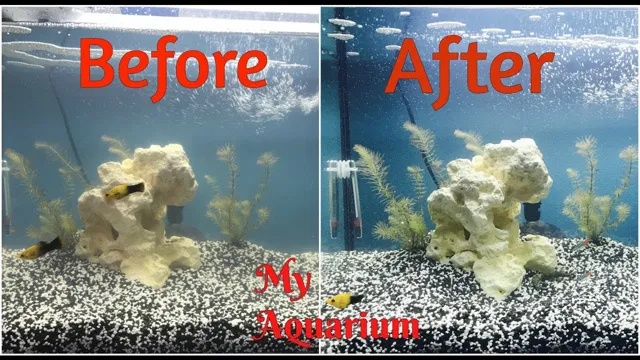
Having an aquarium at home is a beautiful addition to any living space. However, there’s nothing more frustrating than cloudy, murky water. A clean, clear aquarium not only looks better but also results in healthier fish and plants.
Achieving perfectly clear aquarium water is no easy feat, but with a few tips and tricks, it’s certainly achievable. In this blog, we’ll explore the ways to get clear aquarium water, from selecting the right filtration system to using the proper cleaning tools. So, let’s dive into the world of aquarium maintenance and get crystal clear water!
Factors Affecting Water Clarity
If you want to know the secret of having clear aquarium water, then understanding the factors that affect water clarity is essential. One of the most important factors that contribute to crystal clear water is the maintenance of the aquarium. The filtration system is responsible for removing debris, waste, and uneaten food that can cloud the water.
Another factor is the water chemistry, including pH level, water hardness, and nitrate and ammonia levels. If these levels are not balanced, it can contribute to cloudiness and even harmful algae growth. Moreover, overfeeding can lead to an overpopulation of fish, uneaten food, and waste, all deteriorating the water quality.
Lastly, the type and amount of plants and decor elements in the aquarium can also affect water clarity. It is crucial to ensure that there is enough space for the fish to swim and the decor to provide them with hiding spots without overcrowding the tank. Maintaining a healthy aquarium requires a balance of these factors, and with proper attention and care, you can achieve perfectly clear aquarium water.
Water Chemistry
When it comes to water clarity, there are several factors that can affect it. One of the most significant ones is the presence of suspended particles in the water. These particles can come from various sources, such as soil erosion, runoff from agricultural fields, or waste from animals.
Additionally, the amount of dissolved minerals and organic matter in the water can also impact its clarity. For example, high levels of dissolved minerals like iron or manganese can cause the water to appear cloudy or discolored, while excessive organic matter can make the water murky with algae growth. Similarly, water temperature can also affect clarity, as warmer water can promote the growth of algae and bacteria, leading to a decrease in clarity.
The presence of pollutants, such as chemicals or heavy metals, can also play a role in water clarity. In short, several factors can impact water clarity, which is why it is crucial to monitor and manage these factors when dealing with water sources.
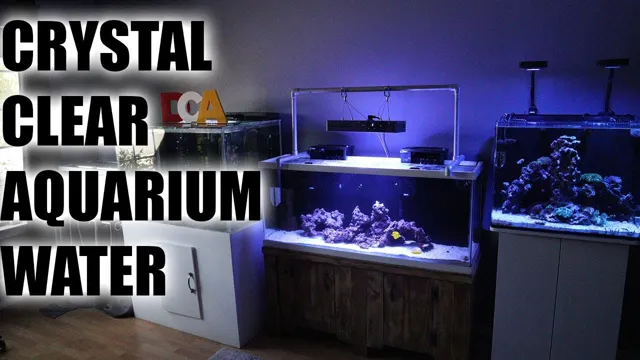
Filtration System
When it comes to maintaining a clean and clear pool, a filtration system is essential. However, did you know there are various factors that affect water clarity? One of the most significant factors is the size and type of filter being used. If the filter is too small or unable to handle the volume of water in the pool, it will not effectively capture and remove all debris and particles in the water.
Another factor that can affect water clarity is the presence of algae. Algae growth is often facilitated by high temperatures and low chlorine levels, so proper chemical balancing is crucial for maintaining water clarity. Lastly, the pool’s environment can also impact water clarity.
If there are nearby trees shedding leaves or a high volume of swimmers, debris and contaminants can quickly accumulate in the water, making it cloudy. Investing in the right filtration system and regularly maintaining chemical levels and cleanliness can help ensure crystal clear pool water all season.
Fish Load
Fish load, or the amount and type of fish in an aquarium, is a crucial factor affecting water clarity. The more fish there are in the tank, the more waste they produce, leading to cloudy water. Additionally, the type of fish also matters as some species produce more waste than others.
Overfeeding your fish can also contribute to cloudy water as uneaten food can accumulate and decay, releasing harmful toxins. It’s essential to keep an eye on the water parameters and perform regular water changes to maintain optimal water clarity and a healthy environment for your fish. Remember, a healthy aquarium is one with a balanced fish load and proper care.
Steps to Achieve Perfectly Clear Aquarium Water
If you are wondering how to get perfectly clear aquarium water, the process is not as difficult as it may seem. The first step is to make sure you have a good filtration system that can handle the size of your aquarium. Regular water changes are also essential to maintaining water clarity and removing excess nutrients and waste.
Additionally, avoiding overfeeding your fish can help to reduce the amount of organic material in the water. Utilizing live plants can also assist in keeping the water clear by absorbing excess nutrients and producing oxygen. Lastly, ensure that your aquarium receives adequate amounts of light as this can impact the growth of algae and affect water clarity.
By following these simple steps, you can achieve perfectly clear aquarium water and provide a healthy environment for your fish to thrive in.
Regular Water Changes
One of the most crucial steps in achieving perfectly clear aquarium water is conducting regular water changes. It’s important to remove and replace a portion of the aquarium water every week to maintain a healthy aquatic environment. On average, a weekly water change should be around 10-20% of the aquarium’s total volume.
This will help to eliminate any accumulated waste and improve water quality. Before starting the water change process, make sure to turn off any equipment and remove any decorations that may get in the way. Use a siphon to vacuum the substrate and eliminate any debris that has settled.
Next, remove the desired amount of water and replace it with fresh, treated water at the same temperature. It’s crucial to add water conditioner to the new water to remove any chlorine or chloramine that may be present. A regular water change routine will help to keep your aquarium looking and feeling its best!
Proper Filtration Maintenance
Proper filtration maintenance is the key to keeping your aquarium water perfectly clear. The first step is to regularly clean and replace filter media such as mechanical and biological filtration. This ensures that debris and waste are effectively removed from the water.
Additionally, establishing a maintenance schedule for your aquarium will help prevent build-up of harmful toxins and bacteria. This includes regular water changes, testing for pH and other levels, and adjusting as needed. It’s important to remember that an aquarium is a closed system, meaning any pollutants or toxins will continue to accumulate unless they are properly filtered and removed.
By following these steps, you can achieve a crystal clear and healthy aquarium for your fish to thrive in.
Avoid Overfeeding
Overfeeding can be one of the primary culprits of cloudy aquarium water. While it can be an easy mistake to make, it’s crucial to avoid overfeeding your fish if you want perfectly clear water. When you feed your fish too much, the excess food turns into waste that can harm your aquatic animals and cause an array of problems in the water’s quality.
To achieve clear water, you can start by feeding your fish multiple small meals throughout the day instead of one large feeding session. This approach will help prevent excess food from decomposing and turning into waste that causes murky and cloudy water. Additionally, you can use high-quality food that produces less waste and remove any uneaten food from the aquarium to prevent it from decomposing.
By taking a few preventative measures, you can help ensure your aquarium remains healthy and crystal clear for your fish to thrive in.
Avoid Overcrowding
Overcrowding can be a major problem when it comes to maintaining clear and healthy aquarium water. When too many fish are in a tank, they produce excessive waste that can cause a buildup of harmful toxins and bacteria. When this happens, it can lead to problems like cloudy water, algae growth, and an increase in pH levels.
To avoid overcrowding, it’s important to select the right fish for your tank size and to limit the number of fish you add over time. Additionally, you should ensure that your tank is properly sized and filtered to handle the number of fish you have. By taking steps to avoid overcrowding, you can help ensure that your aquarium remains clean and healthy, providing a safe and comfortable environment for your aquatic pets.
Tips and Additional Tricks
Getting perfectly clear water in your aquarium is a goal that every fish owner strives for. Apart from regular maintenance, there are some additional tricks and tips that can help achieve the desired clarity. One handy tip is to use activated carbon or chemical filter media.
These substances help in removing impurities and cloudiness from the water. Furthermore, it’s essential to avoid overfeeding your fish and maintain a strict feeding schedule. Overfeeding leads to uneaten food settling at the bottom of the tank, which can cause water cloudiness.
Another trick to try is regular water changes. This helps eliminate nitrate buildup and other harmful substances in the aquarium water, resulting in crystal clear water for your pets to enjoy. Lastly, ensure that your aquarium is not overstocked and maintain good filtration to prevent the accumulation of waste.
With these additional tricks, you can get the perfectly clear water and give your fish an ideal environment to thrive in.
Choose Your Fish Wisely
When it comes to choosing your fish wisely, there are a few tips and additional tricks that can help you make a decision. The first thing to consider is what type of fish you want to eat. Some species are more sustainable than others, so it’s important to do your research and choose a fish that is both delicious and eco-friendly.
You can also look for labels like “Wild-Caught” or “Responsibly Farmed” to make sure that you’re choosing a fish that has been sourced in a sustainable way. Another important factor to consider is how the fish was caught or raised. If you’re looking for a fish that is free from antibiotics and hormones, for example, you may want to choose one that has been sustainably farmed.
Finally, it’s important to choose a fish that is in season. This will ensure that you’re getting the freshest, most flavorful fish possible. By following these tips and tricks, you can choose your fish wisely and enjoy a delicious, sustainable meal that is good for both you and the planet.
Consider Live Plants
When it comes to bringing a little life into your home or office space, live plants are an excellent choice. Not only do they add a touch of natural beauty, but they also bring numerous benefits to your surroundings. Plants can help purify the air, reduce stress levels, and even improve cognitive function.
But to ensure your plants thrive, there are a few tips you should keep in mind. First, take the time to research the type of plant you want to bring home. Different species have different requirements when it comes to light, water, and temperature, so be sure to choose one that will thrive in your specific environment.
Additionally, keep in mind that overwatering is a common cause of plant death – be sure to let the soil dry out a bit between waterings. Finally, consider purchasing a plant humidifier or placing a tray of water near your plant to keep humidity levels optimal. By following these tips, you can enjoy all the benefits of having live plants in your space without worrying about them dying prematurely.
Use Activated Carbon
If you’re looking to purify your water or air, using activated carbon can be a great option. But what are some additional tricks and tips you can use to maximize its effectiveness? First, make sure to properly size your activated carbon filter for the area you’re trying to purify. A smaller filter won’t be as effective in a larger space, and vice versa.
Additionally, consider using multiple filters in strategic locations to ensure maximum coverage. Finally, make sure to replace your activated carbon filters regularly to maintain their effectiveness. By keeping these tips in mind, you can maximize the benefits of using activated carbon to purify your air and water.
Avoid Direct Sunlight
When it comes to taking care of your skin, avoiding direct sunlight is one of the best things you can do. Not only can sun damage lead to signs of premature aging, but it can also increase your risk of skin cancer. To protect your skin, make sure to wear hats, sunglasses, and protective clothing whenever you’re spending time outdoors.
You should also try to seek out shade whenever possible, especially during the hottest parts of the day. If you do need to be in the sun, be sure to use a sunscreen with an SPF of at least 30, and reapply it every two hours. With these simple tips, you can avoid the harmful effects of direct sunlight and keep your skin looking healthy and youthful for years to come.
Check Water Temperature
When it comes to enjoying a relaxing bath or shower, the water temperature plays a crucial role. Whether it’s too hot or too cold, it can ruin the experience. So, it’s essential to check the water temperature before stepping in.
The ideal water temperature for a bath or shower is between 36°C to 43°C. Water that is too hot can irritate the skin, lead to burns, and dehydrate the body, while water that is too cold can cause shivering, muscle cramps, and goosebumps. To get the right water temperature, always start by adjusting the hot water and then adding cold water slowly.
You can use a thermometer or your hand to check the water temperature. If it’s too cold, add more hot water, or if it’s too hot, add more cold water. Remember, the water temperature can vary depending on the season, so you may need to adjust it accordingly.
By checking the water temperature before getting in, you can have a safe and enjoyable bathing experience.
Conclusion
In conclusion, achieving perfectly clear aquarium water requires a combination of good maintenance habits, proper filtration, and diligence in monitoring water parameters. It’s important to stay on top of water changes, avoid overfeeding, and invest in high-quality filtration systems. And while it may not always be easy to achieve crystal-clear water, the end result is worth it.
So don’t let cloudy water dampen your aquatic dreams – follow these tips, and watch your aquarium flourish!”
FAQs
What causes cloudy water in aquariums?
Cloudy water is commonly caused by a bacterial bloom, excess food or waste, or an imbalance in the aquarium’s chemical levels.
How often should I change the water in my aquarium to keep it clear?
The frequency of water changes will depend on the size of your aquarium, the number of fish, and the type of filtration system you have. Generally, a 25% water change should be done every two weeks, but some aquariums may require more frequent changes.
Can adding live plants help clear up aquarium water?
Yes, live plants can add oxygen and absorb excess nutrients that can cause cloudy water. They also provide natural filtration and can help maintain the balance of your aquarium.
Should I use chemical water clarifiers in my aquarium?
Chemical water clarifiers can be effective at temporarily clearing up water, but they can also disrupt the natural balance in your aquarium. It is best to address the root cause of cloudy water rather than relying on chemical treatments.
How can I prevent algae growth in my aquarium?
Proper lighting and filtration, as well as limiting the amount of time the aquarium is exposed to direct sunlight, can help prevent algae growth. You can also consider adding algae-eating fish or using an algae scraper to maintain the cleanliness of your aquarium.
What is the ideal pH level for clear aquarium water?
The ideal pH level for most aquariums is between 6.5 and 7.5. Keeping pH levels within this range can help prevent the growth of harmful bacteria and maintain clear water.
Are there any natural remedies for clearing up cloudy aquarium water?
Yes, adding aquarium-safe charcoal or activated carbon to your filtration system, increasing oxygen levels with an air stone, and removing excess waste and debris can all help naturally clear up cloudy water in your aquarium.

